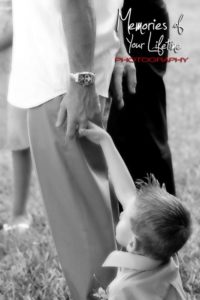 Shooting a wedding is like shooting while you are walking. As a wedding photographer, you are constantly moving, your lighting is constantly changing, your models are not professionals and getting their attention is next to impossible. So with all these obstacles, how do you go about getting those one-of-a-kind beautiful wedding photos? Well in short, you do it quickly.
Shooting a wedding is like shooting while you are walking. As a wedding photographer, you are constantly moving, your lighting is constantly changing, your models are not professionals and getting their attention is next to impossible. So with all these obstacles, how do you go about getting those one-of-a-kind beautiful wedding photos? Well in short, you do it quickly.
As a wedding photographer your skills as a professional are never in more need than they are during a wedding. A wedding is a moving photoshoot. From the time that the bride and groom walk down the aisle to the time they are together on the altar the lighting is different. You as a photographer have to be able to adjust for this. You have to know that in the 30 minutes or so after the wedding you have to put together 10 to 30 small portrait sessions when you do the formal portraits of the wedding party. You have to anticipate what your lighting is going to be like when you get to the reception. You have to be ready for anything.
Your first priority is planning. If you have never been to the ceremony location and it is located in the same city you are in I suggest you make a visit prior to the event date. Check the lighting; check out the surroundings and the backgrounds. Scout for the best location to take the formal portraits after the ceremony. Talk with the location event coordinator if possible and ask about rules for photographers during the event. Every location has their own rules and they are all different. If you want to be respected and asked to return I advise that you follow those rules to the best of your ability. I also suggest that you make your client aware of any rules that may impair their perception of how the wedding photography should happen.
 I shot a wedding one time and they would not allow me into the sanctuary during the event. I could only stand at the back of the room. The couple was not aware of that during the wedding planning and I made sure they knew before the ceremony so that they would not be thrown off guard when they saw their portraits.
I shot a wedding one time and they would not allow me into the sanctuary during the event. I could only stand at the back of the room. The couple was not aware of that during the wedding planning and I made sure they knew before the ceremony so that they would not be thrown off guard when they saw their portraits.
On the day of the event, re-review the layout of the event. Take light readings for all the different areas of the wedding. An assistant will come in very handy here as they can be used as a stand in for the couple and you can get fairly accurate light readings using them as a model. Have them walk down the aisle and check your settings as this is one of the most important parts of the event for a client. You need to get them right and you need to get them right quickly. There is no do-over.
Check your location for the formal portraits. Check if the lighting will be different by the time you are able to take them and take that into account. Make sure that the wedding coordinator is aware of who will be needed and be sure and ask for as much time as possible to take the photos. What we offer is probably the most important part of the event but we are left with the least amount of time to do our job. Make sure you get as many minutes as possible but most events will only a lot for 30-45 minutes for the formal photographs. Discussing with the couple prior to the event what photos they want and who they want in them will greatly reduce the time necessary to take these images.
Remember to stay on the move and anticipate each part of the event. Constantly plan in your head your next move and you will stay on top of your job and capture great Memories every time!
*The Current Photographer website contains links to our affiliate partners. Purchasing products and services through these links helps support our efforts to bring you the quality information you love and there’s no additional cost to you.
My name is Robert Hillis and I operate Memories of Your Lifetime Photography. I specialize in wedding and portrait photography in San Antonio, TX. I am an artist at heart and I love to “Paint with my Lens”! I’ve been shooting professionally for about 5 years but I’ve been doing it for fun forever! I truly love what I do and I think that shows through in my photos.
I like to tell my clients that because a wedding is truly a once in a lifetime event, what I offer them will stand the tests of time. Of all of the things that you buy for your wedding, what I offer will outlast them all. The food gets eaten, the cake goes away, the tuxedo is returned and the limo is a distant memory. The dress may stay in the closet out of view for years to come but my images, my photos, will outlast you, your kids, their kids and even their kids kids. I’m not just taking photos, I’m preserving your family history. I am capturing the Memories Of Your Lifetime!